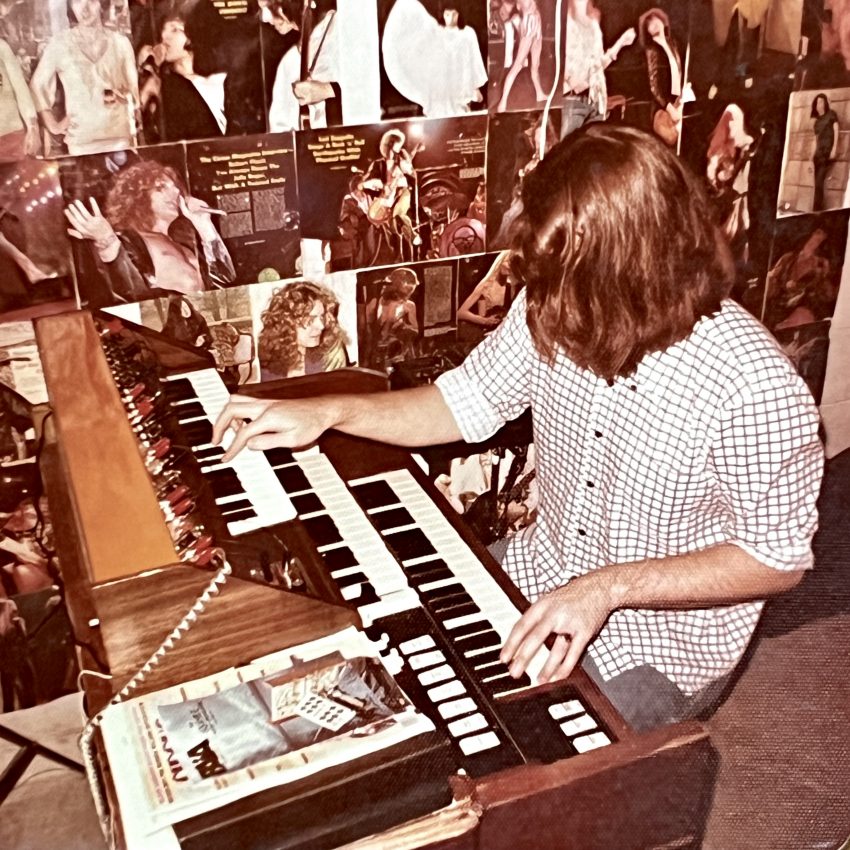I woke up Sunday morning thinking about the album that got me into electronic and ambient music. It was Tangerine Dream’s 1975 release “Rubycon”. I decided to play it while lying in bed and found that it still impresses me with the sounds and moods that the band created with what we now consider primitive gear.
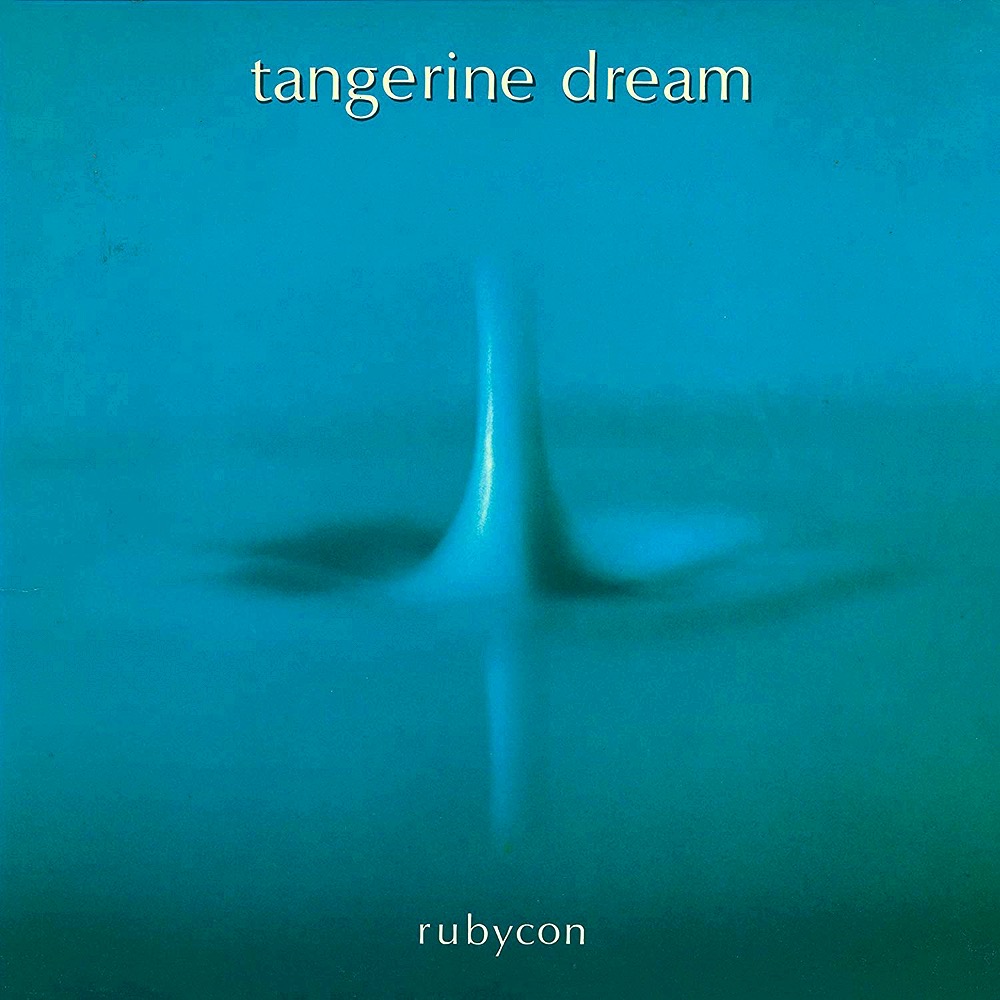
Rubycon consists of only two long tracks each taking up an entire side of the album, at a little over 17mins each. After breakfast I was still thinking about the band, and dug out the albums that I have on vinyl, spanning from 1970 through 1984. During that time T. Dream was a trio, with the classic line up being Edgar Froese (founder), Christopher Franke, and Peter Baumann (later the creator of the Private Music label, originally releasing New Age music such as Patrick O’Hearn’s first few albums, and many other artists). They were quintessentially German, along with several other early German electronic artists such as Klause Schultz (who was actually a member of T. Dream on their first album).
Here is my T. Dream vinyl, with the three albums in the middle being the pinnacle of the classic lineup, and also my favorite releases from the band; Phaedra (1974), Rubycon (1975), and Ricochet (1975).
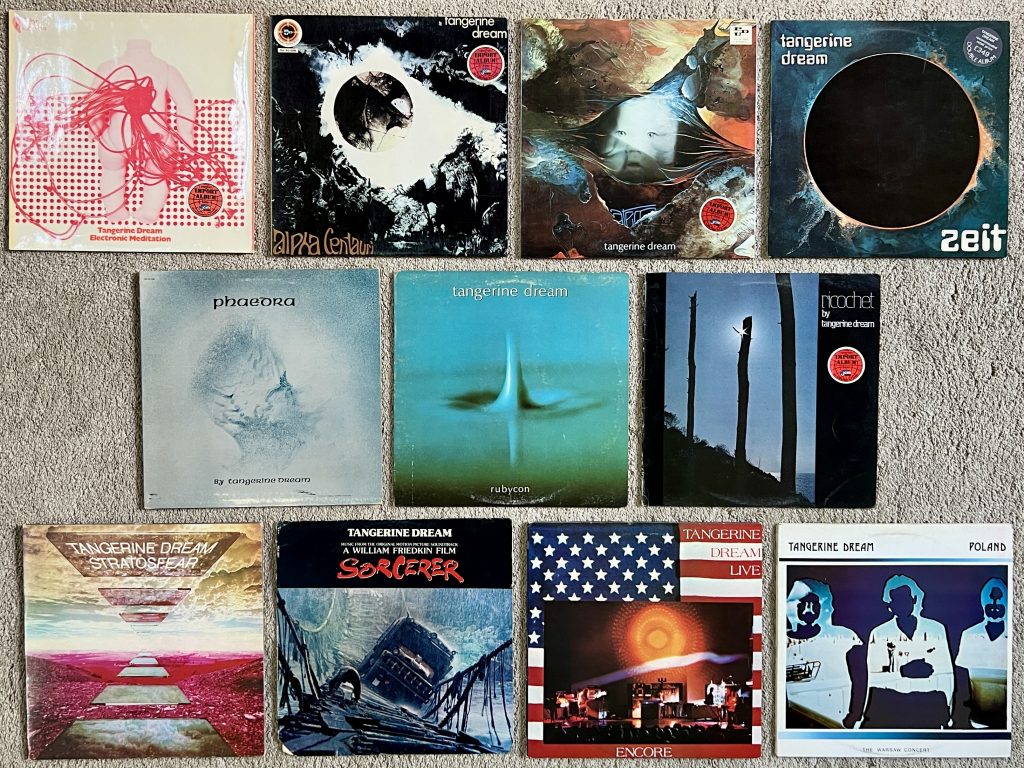
Tangerine Dream performed extensively live; just three guys sitting behind monstrous banks of synths and electronics. They were extremely prolific, releasing at least an album or more every year. Their live shows were mostly extended improvisations which were always recorded and could be released as a new album.
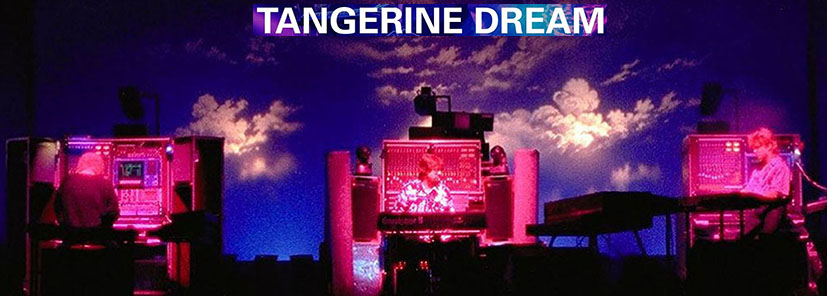
After breakfast I remembered a piece that I made in 1975 with the Paia Modular synth that I had recently finished building, recorded through an Echoplex tape delay. Here is a pic of the Paia with the Echoplex on the right. (Note also the Vibravox in the background.)
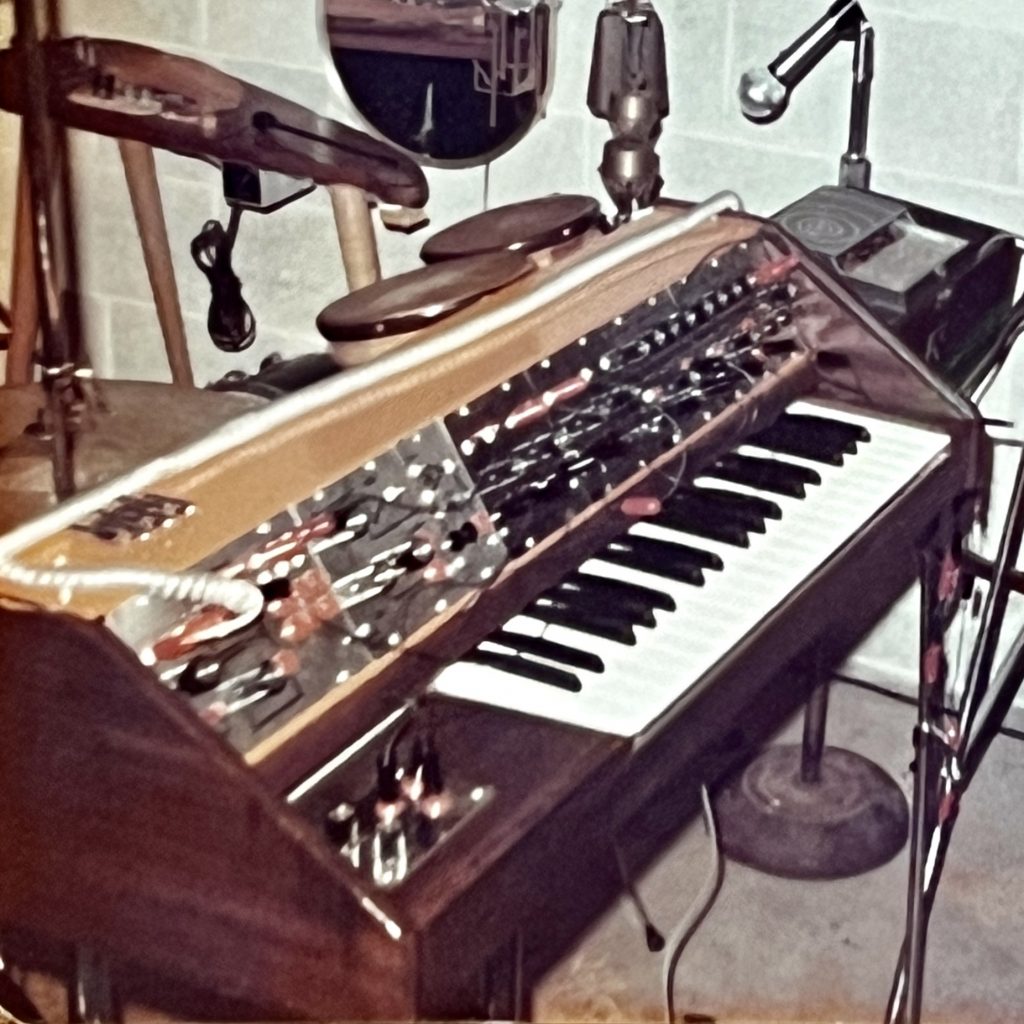
This is the first version of the Paia before I added two upper “wings” to hold several more modules. I made a track with the Paia and Echoplex in 1975. I recorded it on a two channel reel-to-reel tape deck to which I added a switch that disabled the erase head. So I could make two passes by first recording on the left channel, and then flipping the switch to overdub on the right channel. Basically “sound-on-sound” recording as it was called. This was well before I was able to make the step up to a Teac 3340S 4-track (which still sits in the living room today).
I built the Paia because I couldn’t afford a Minimoog at the time, which was $1,500… a huge amount in 1975 dollars for a teenager. Since by then I already put three years of electronics classes under my belt, building the Paia kit was my only option for a $250 synthesizer.
Next, here I’m playing the brand new Paia synth. You can see the Paia brochure resting to the side along with the construction manuals for the synth and its modules. I built the entire project in less than a week. Below the Paia is the Hammond M3 organ in an early state with a few broken keys, and was before I painted it white when I was in the band Skyler.
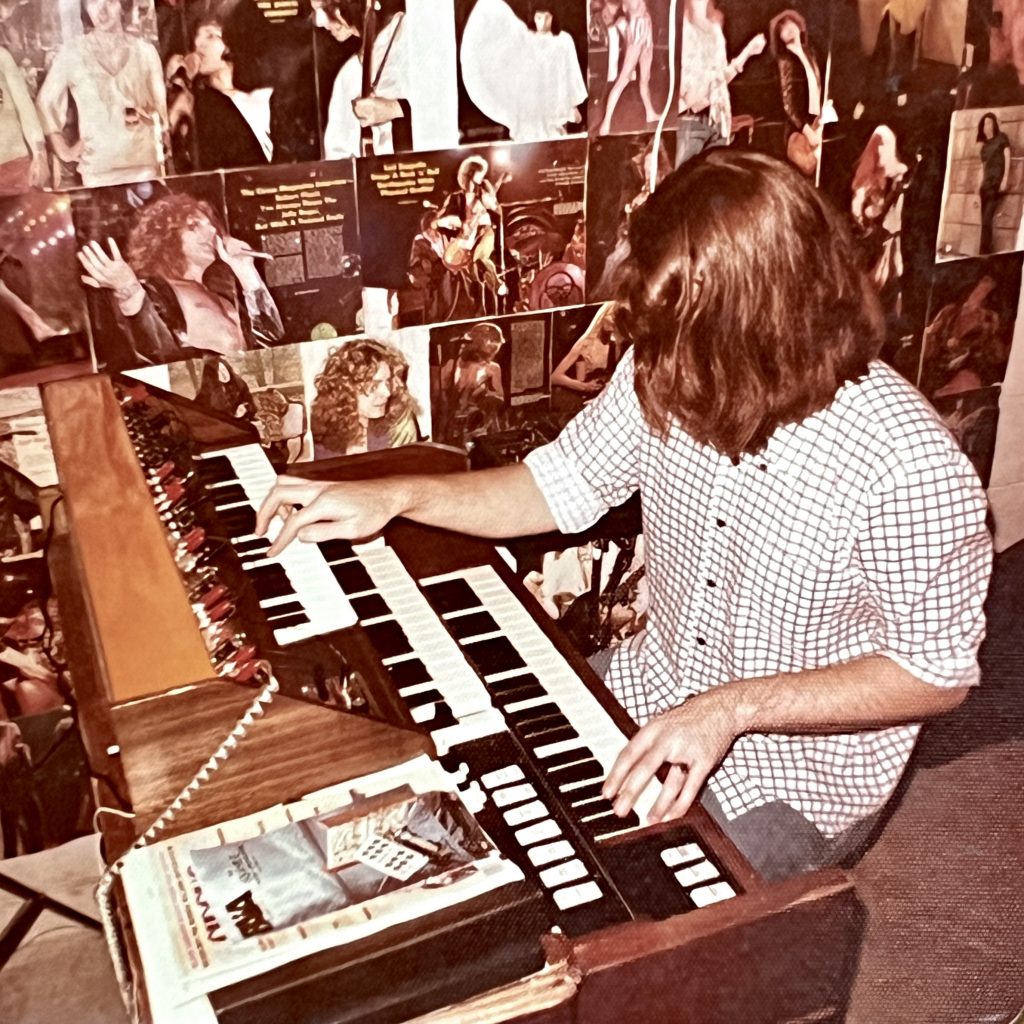
It wasn’t long before I saved enough money to expand the Paia:
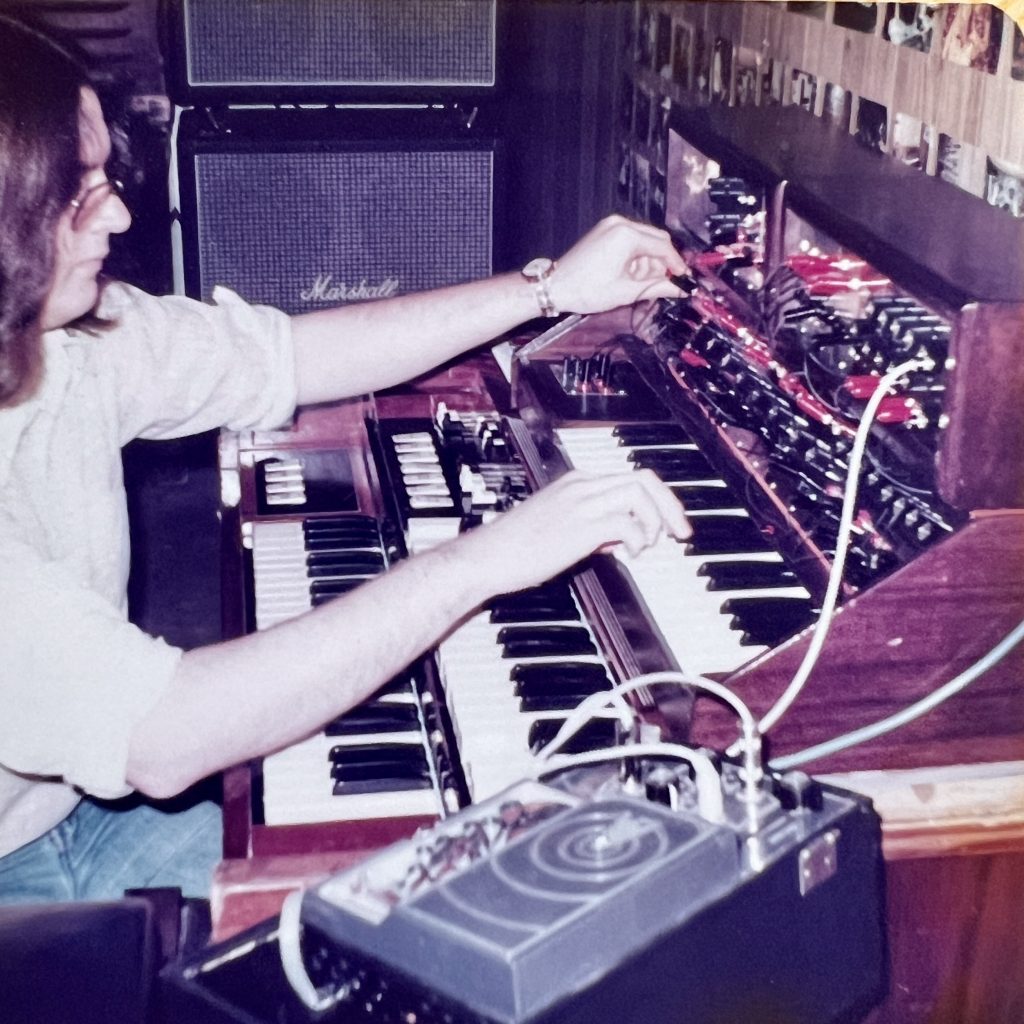
I added two “wing” cabinets on top and built several more modules to fill them. I was also needing more patch cords as my patches became more advanced. In the foreground is the Echoplex tape delay, made by Maestro.
Here’s another shot of the expanded version:
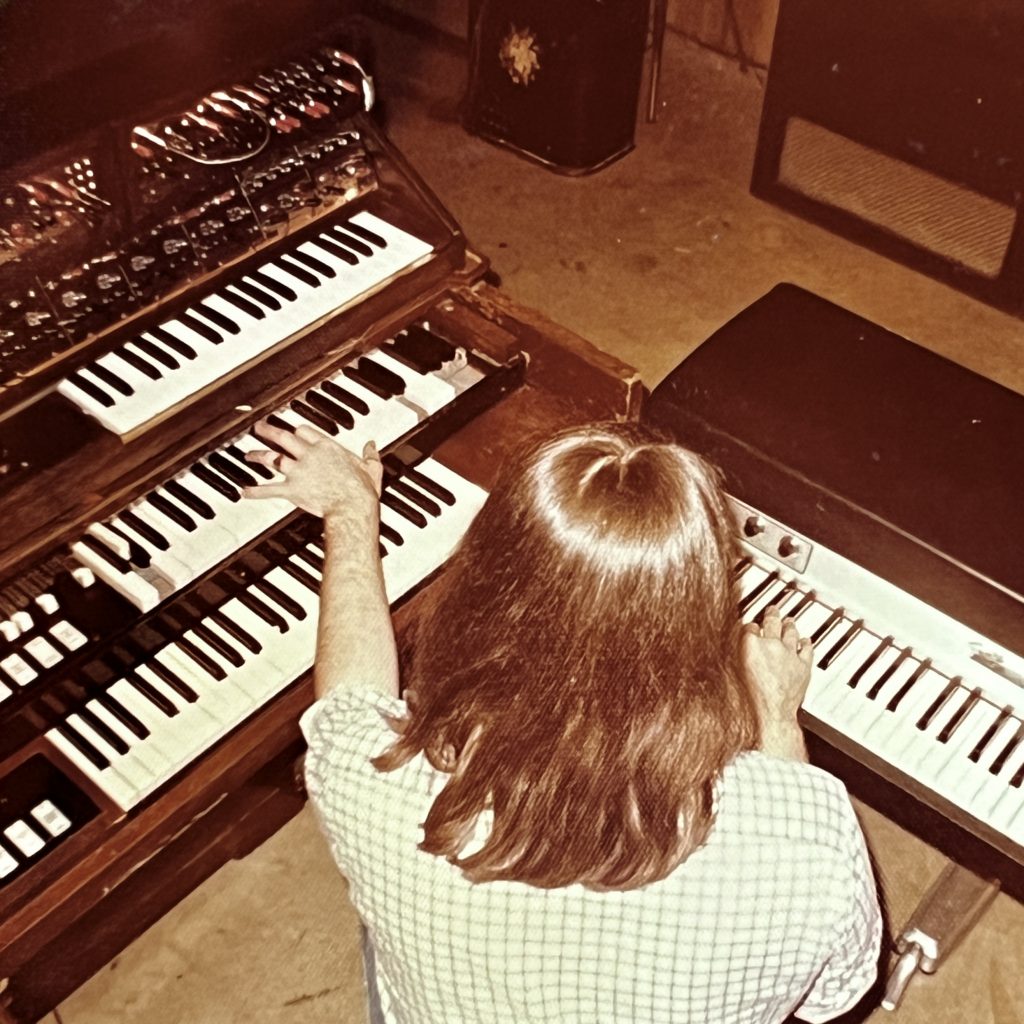
The keyboard to the right of the Hammond is a Fender Rhodes Stage 73 electric piano.

